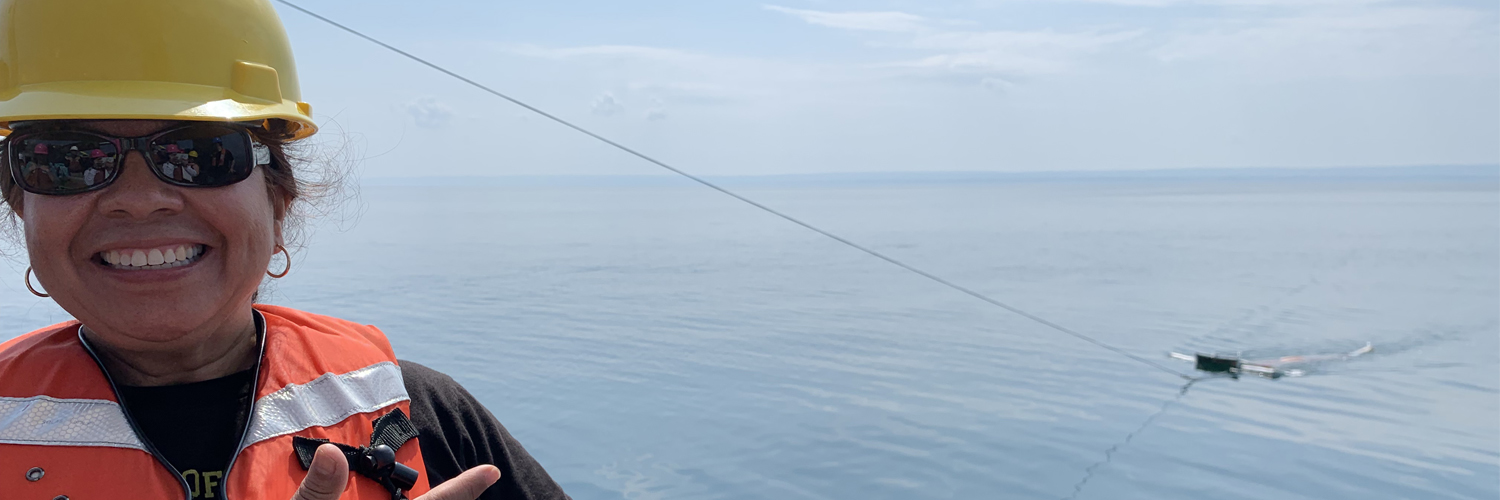“Plastics can be like diamonds: forever,” says Lorena Rios Mendoza. The UW-Superior environmental chemist studies how the nonbiodegradable synthetic materials get into Lake Superior and the problems they can cause as they fragment or absorb toxic chemicals also present in the environment.
Rios Mendoza focuses on microplastics, pieces smaller than a pea, that may look like food to fish and other lake dwellers. When the organisms eat the synthetic materials, they also ingest any toxic chemicals the plastics have picked up. Some of these compounds can cause cancer, birth defects and other health problems for animals higher up the food chain – including us.
Now, Rios Mendoza is working with colleagues from UW-Madison, UW-Eau Claire and the Lake Superior National Estuarine Research Reserve, with support from the Freshwater Collaborative of Wisconsin, to answer key questions about Superior’s tiny troublemakers.
“We know the sources of the microplastics. They enter Superior through the St. Louis River and other tributaries that move the microplastics into the lake,” Rios Mendoza says. “But what is the distribution? What is the speed and flow? How are they transported?”
In summer 2021, Rios Mendoza and her team will collect samples from both western Lake Superior and the nearby St. Louis River estuary. Most previous sampling collected material from the lake’s surface. The new project will also sample various depths of the water column and the lake bottom, where many heavier, denser microplastics are likely to be found.
Colleagues across the state will analyze the samples to learn more about how the microplastics interact with the Lake Superior ecosystem and, potentially, how to reduce the damage they’re doing to even the greatest of Great Lakes.
“If you compare Lake Superior and Lake Erie, Lake Erie is small and shallow and surrounded by a lot of people, so the pollutants are right there,” says Rios Mendoza. “Lake Superior is huge and deep, and people say ‘Oh, it’s the cleanest.’ But it’s not really clean. We still find things.”

